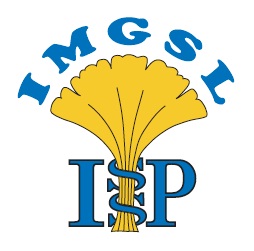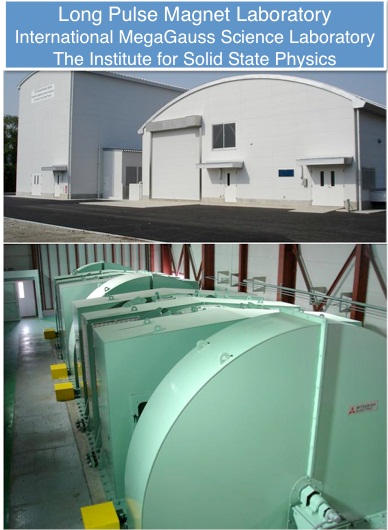|
International MegaGauss Science Laboratory The Institute for Solid State Physics, The University of Tokyo, Japan 2012, Volume 7, Number 4 |
 |
|---|
Location
The Institute for Solid State Physics, The University of Tokyo
Kashiwa Campus
Chiba, Japan
Further Information: http://www.issp.u-tokyo.ac.jp/labs/mgsl/indexe.html

Overview
New megagauss project was started in 1980 in the MegaGauss Laboratory (MGL) at The Institute for Solid State Physics (ISSP), The University of Tokyo at Roppongi, Tokyo. In accordance with the relocation of ISSP, the MGL was moved to the Kashiwa campus in 1999, and renewed as the International MegaGauss Science Laboratory (IMGSL) in 2006. The IMGSL has been founded as one of the central facilities in the world for the science and technology in ultra-high magnetic fields by use of both destructive and non-destructive pulse magnets, and is open for use by domestic as well as international scientists.
Key Contact
Professor Shojiro Takeyama
Facility Director,
Telephone: +81 4 7136 5309
E-mail: takeyama@issp.u-tokyo.ac.jp
Research Foci
? Electro-Magnetic Flux Compression Method:: the energy with 5 MJ stored in condenser banks is used for magnetic flux compression that can generate the world highest in-house magnetic fields over 700 T. Its high controllability provides us with unique opportunity to obtain reliable experimental data in the fields up to 600 T on many kinds of issues in solid state physics.
? Single-Turn Method: generating ultra-high magnetic fields up to 300 T using a small single-turn coil. Optical measurements are mainly conducted using the horizontal single-turn coil system, while the vertical single-turn coil system is employed for magnetization measurements with a low-temperature cryogenics.
? Development of non-Destructive Magnets: developing novel magnets towards the objective of generating the world highest field in non-destructive magnets. The features of our magnets are compact and designed to be useful for physicists doing experiments.
? Short/Mid-Pulse Magnets: generating fields up to 70 T / 65 T in duration of about 6ms / 36ms. We can measure various properties of materials, e.g., magnetization, magnetoresistance, electric polarization, magnetic torque, magnetostriction, and magnetocaloric effects using these magnets.
? Long-Pulse Magnets: Flywheel generator, which is the largest DC generator with a capacity of 51.3 MW, is used to drive a long pulse magnet in duration of 1 – 10 seconds. We can design the profiles of magnetic fields on demand.
? X-Ray Measurements in Pulsed-Fields: A portable pulse-magnet system is introduced to synchrotron radiation facilities such as the SPring-8 in Japan. Changes in crystal structures or valence states can be studied by diffraction or spectroscopic measurements in hard X-ray region in high magnetic fields up to 40 T.
? High-Speed Imaging in Pulsed-Fields: visualizing the real images of the samples in pulsed magnetic fields by taking optical microscope images with a high-speed camera. Using a polarizing microscope, we can identify the changes in crystallographic symmetry induced by applied fields.
Recent Projects
? Electro-Magnetic Flux Compression Method: The new world record as in-house experiments, 730 T, was established. We are going to upgrade the capacitor bank of the power source toward the generation of 1000 T. Using this system, we observed the full magnetization process of a frustrated magnet with the spinel-type structure for the first time, and found novel magnetically ordered phase.
? Single-Turn Method: Accuracy of the magnetization measurements is highly improved by introducing fine-tuned pick-up coils for the induction method. This improvement enabled us to study magnetization process of various magnetic materials up to 100 T.
? Development of non-Destructive Magnets: Using self-developed Cu-Ag wire, we developed the magnet that can generate a field of 85.8 T, which is the world record for the mono-coil magnet driven by a single capacitor bank. Multi-stage magnets, which are driven by several capacitor banks, are under development with an aim to generate 100 T by use of non-destructive magnets.
? Short/Mid-Pulse Magnets: Quantum states of Kagome and triangular antiferromagnets are studied by magnetization measurements. Quantum oscillations in several kinds of metals, including high temperature superconductors, are studied by using transport, magnetic torque, and surface impedance measurements.
? Long-Pulse Magnets: Using a test magnet, we generated a magnetic field up to 30 T in a duration time of 0.5 sec. Caloric measurements are in progress in this long-pulse magnet.
? X-Ray Measurements in Pulsed-Fields: Using X-ray absorption spectra, field-induced change in valence states of novel heavy fermion systems are studied. Element selective magnetization processes are studied using X-ray magnetic circular dichroism.
? High-Speed Imaging in Pulsed-Fields: In a parent compound of iron-based superconductors, field-induced melting of orbital ordering is directly resolved using the polarizing microscope.